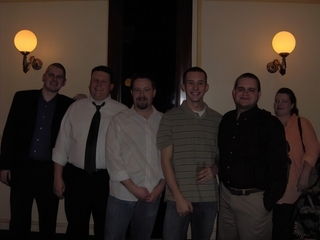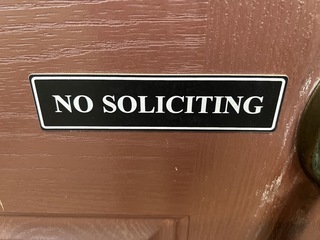So, for those who have either been following the James Kim saga or have been forced to because it was every other item on digg, you likely know he has been found dead. We won’t know a final cause of death until an autopsy is performed, but I have no doubt that it will show he died of hypothermia and exposure to freezing temperatures.
This is going to sound insensitive, but I’m going to say it because it needs to be said: if there is a poster child for having done every possible thing wrong in trying to survive in an emergency situation, James Kim is it. I’m sorry that he died, but he went into a situation unprepared and once there made the absolute wrong choices. I just hope everyone else learns from his mistakes.
When I was a park ranger in Yellowstone last time I worked for the park service in 2002, we had a man and his son go out canoeing on Shoshone Lake in the south of the park. This is early June, when the always cold Yellowstone water is still barely above freezing (the ice doesn’t completely clear from Lewis for another month).
When they failed to check back in, SAR was summoned, and I was working the radios that day. The next morning near 8S5, we found the overturned canoe up against the bank. A few yards away were the bodies of the father and his son floating face down in the water.
Folks, nature is no joke. This is not Disney World with anamatronic talking trees and deer. Nature is serious and nature will kill you if you don’t take the proper precautions. How many times can I say this?
If you were in James Kim’s situation, there are some common-sense (at least I think they are) things you should have done that would have drastically increased your chances of survival.
-
Tell someone your route of travel. This is so simple and yet it is something that hardly anyone dies. In James Kim’s case, SAR lost valuable time because no one had any clue what route he took, so no one knew where to start looking. They had to search thousands of square miles of Oregon backcountry because he literally could have been anywhere.
-
Check the weather before you leave. If you know the it’s going to be a ten-hour drive, think twelve hours into the future. Will that front have moved through, dumping feet of snow on our route? If so … don’t go. It’s better to be delayed out of caution than to be caught in it.
-
Dress for the weather, even if you’ll be in the car. Plan for the worst and assume that you’ll have to walk somewhere in the freezing cold and snow. Remember that most heat is lost through the head, so wear one or more thick head coverings, and that wet skin loses heat faster, so try to stay dry.
-
If you are caught in a snowstorm a long way from anywhere, stay where you are with your vehicle, unless there is eminent danger (like an avalanche or something) involved in you doing do. If you have followed rule #1, the first place SAR will begin searching is along your route of travel. It will not be comfortable (in fact, it will be very cold), but this is the fastest way to be found. If you leave your car, you risk hypothermia and disorientation. And why we’re talking about vehicles…
-
The following items should be in the possession of any car owner during long travel in the winter months:
- A heavy blanket or two.
- First Aid kit.
- Emergency food rations (Powerbars taste like crap, but are great for this kind of thing; you should have enough for several days; candy also works well).
- Emergency water (it may freeze and in the worst case you can warm snow up)
- Toolbox containing routine simple tools as well as a small garden shovel
- Duct tape.
- One or more plastic trashbags.
- Check out a full winter list at: https://uwadmnweb.uwyo.edu/fleet/Carpohints.htm
-
Keep the windows clear of snow as best as you are able (use the garden shovel). Open a door occasionally to keep from getting trapped inside.
-
Use body heat and blankets for warmth. Do not run the engine any more than necessary because carbon monoxide can build up inside.
-
Once the snow has stopped, if you are able to leave your car and it is safe to do so, make markings that SAR will be able to see from the air to indicate where you are. Do not leave the immediate vicinity of your car.
-
If you absolutely must leave your car for whatever reason, **make markings that SAR can see from the air **(such as arrows indicating your direction of travel made from sticks, rocks, or trenched into the snow) **and travel along your route towards the closest human settlement. DO NOT GO CROSS-COUNTRY, even if it looks faster. **It is safest to travel along the route you told someone about (remember rule #1) or at least along a roadway of some kind.
-
Break the rearview mirror off the windshield and take it with you. This can be used to signal airborne SAR or other responder units. It can be replaced - your life can’t.
The key thing to remember when is that, unless your life is in imminent danger, do not leave your car. Jame Kim did not do any of the things listed above: he didn’t tell anyone his route, didn’t yield to the weather, didn’t stay with is car, and wasn’t prepared for what he faced. He underestimated the danger he faced.
His wife and kids didn’t leave the car and were found unharmed after only a few days.




